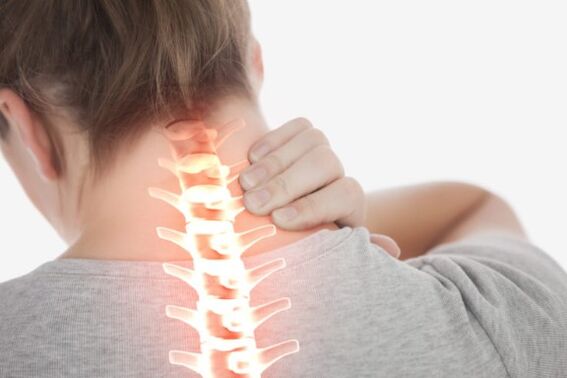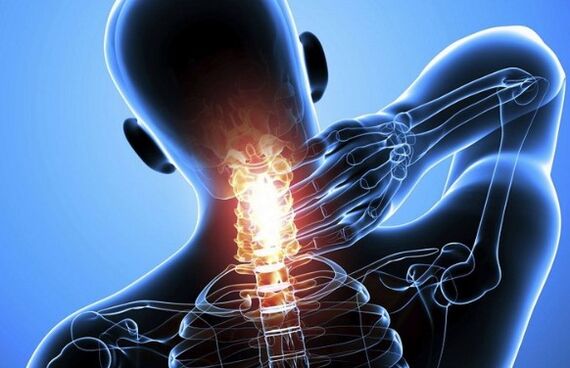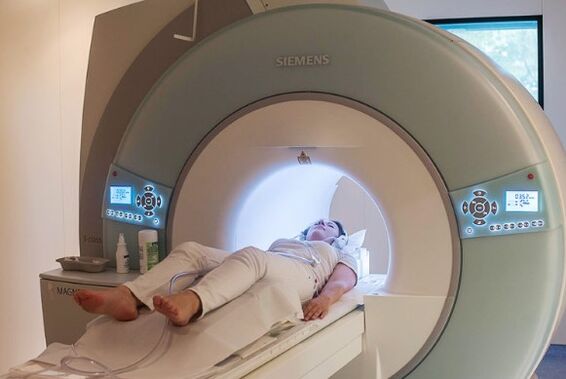Osteochondrosis is a complex of serious degenerative-district destruction of cartilage tissue located between vertebral vertebrae. In this pathological phenomenon, the discs themselves are affected, their changes in height, bone tissue is damaged in the cervical region.Pathology has similar symptoms to some diseases. The main thing is to notice the first signals of the body in time and undergo diagnosis with the necessary treatment, otherwise osteochondrosis will begin to progress, cause migraine and circulatory disorders. Basically, pathology develops in people who have reduced motor activity. This is due to the fact that the exchange of mineral salts in the body is disturbed, which causes the connective tissue to thinning, as well as a decrease in their strength.

Causal factors of the occurrence of the disease
The neck is the most removable part of the body, so it experiences a constant load, as it is forced to keep its head in a certain position. Some factors can have a negative effect on this area of the body and form inflammatory processes in the connective tissue of the body.
The reasons for developing pathological deviations in the cervical vertebrae are:
All of these factors adversely affect the vertebrae of the cervical region, creating pressure, which leads to involuntary tonic decreases of smooth and skeletal muscles. Which leads to the formation of hemodiscillarative processes, a slowdown in metabolism functions, the development of dysfunction and degenerative changes in the cartilage. The vertebrae begins to deform, acquiring a non -standard shape and often go beyond the spinal column.
Symptoms of the disease
The very initial stage of the pathological process is clearly visible by some signs.

Important!There are two types of dizziness. With non -systematic dizziness, evil, stunning appears, it is difficult for a person to be in a straight position. But at the same time, objects that fall into appearance do not rotate. And with the system, the circular movement of all objects is manifested, which indicates violations in the work of the vestibular apparatus, visual perception, muscle spasms. This is a distinctive sign of dizziness for osteochondrosis.
Table classification of osteochondrosis of the cervical region.
What is the risk of illness?

Pathology damages the whole human body. With osteochondrosis, blood vessels, nerve roots are squeezed tightly, leading to distinctive encephalopathy, developing cepalgic syndrome, causes heart rhythm pathologies, visual systems, respiration, concentration and coordination processes.
The disease tends to cause:
Troubleshooting
Ways to diagnose intervertebral discs.
Treatment features
In the treatment of osteochondrosis of the cervical region, they are based on the degree of disease, manifestations and its characteristic clinical form. Treatment can be performed as:

After a diagnostic examination, the specialist makes a final diagnosis and describes the necessary treatment depending on the clinical figure of the disease. In essence, if the disease is in a stage that does not require a surgical surgery, complex therapy is prescribed, which includes taking medication, performance of therapeutic exercises and passing the course of healing massage.
medicaments
The doctor prescribes medicines aimed at eliminating pain symptoms, focuses of inflammation and muscle tension, resetting cartilage tissue, recharge with a vitamin-mineral complex in the form of capsules, injections, ointments.
Physical therapeutic culture (exercise therapy)
Physical medical education is prescribed to restore blood circulation in the cervical region. The movements should not be sharp, with excess rotation or curvature of the head. It is necessary to imitate the listed movements. The exercises are performed for no more than two minutes. The exercise treatment complex includes head tilts forward and back, without performing the action to the end.
Basic exercises used to treat osteochondrosis.
Therapeutic massage
In the treatment of osteochondrosis, the specialist makes massage movements in the area of the cervical region, the collar area and the upper back. This procedure must be performed in a lie position so that the patient's body is calm.
Key Terapeutic Massage Techniques:

The method of physiotherapeutic treatment
For the treatment of the pathology of the intervertebral discs of the cervical region, physiotherapy is determined.
Traditional medicine in the treatment of cervical back osteochondrosis
Popular methods to treat osteochondrosis will not work. This is due to the fact that these methods are able to temporarily alleviate the symptoms, but not to solve the main problem - the destructive initial effect on the spinal column. At home, plant ingredients can be used as a support complex for the main therapeutic treatment set by the doctor.
For pain in the cervical region, you can use:

Preventive
To prevent the emergence of one of the dangerous diseases, it is necessary to observe certain rules throughout your life. Following the correct living can be prevented by many diseases. However, there are situations when the disease is inherited, and then it is worth attentive to your health. Dietary nutrition enriched with vitamins and minerals, as well as moderate physical activity, will help maintain the body and even stop the development of an initial disease.
Doctors' recommendations that will help prevent the occurrence of the disease:
At any age, with osteochondrosis, it is worth performing an examination of the body regularly, as well as doing a physical therapeutic culture with regular massage, then with the disease you can live for a long time and comfort.


















